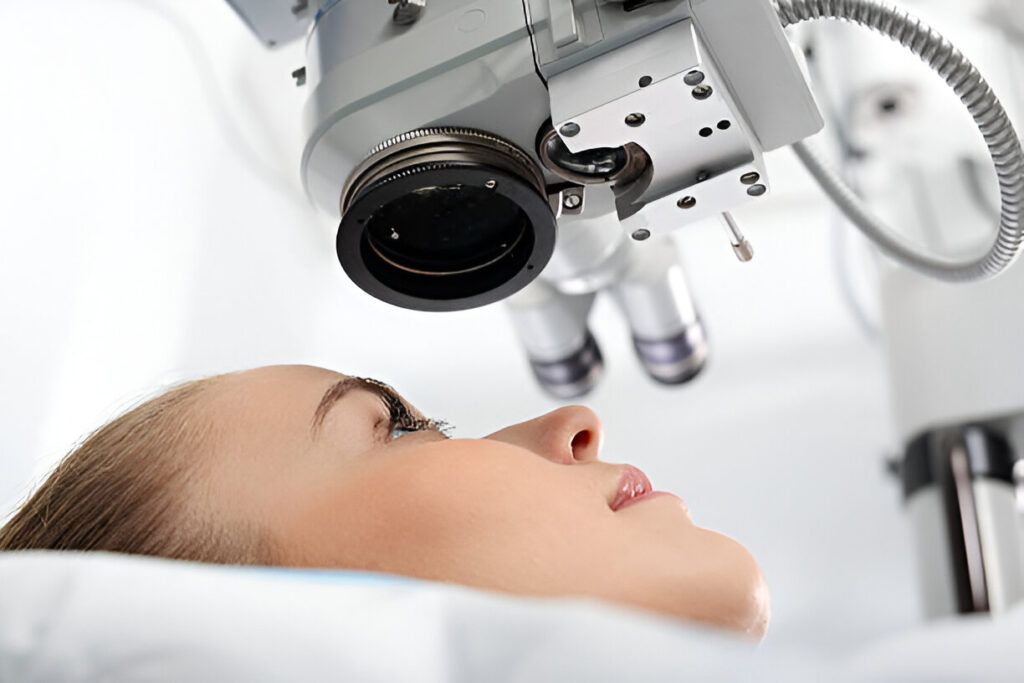Clear vision is something most of us take for granted—until we find ourselves squinting at road signs, holding books at arm’s length, or constantly searching for misplaced glasses. Thankfully, modern medicine offers a remarkable solution in the form of refractive surgery. This transformative medical procedure has helped millions of people regain crystal-clear vision without the need for glasses or contact lenses. But how exactly does refractive surgery work, and is it right for you? Let’s dive in.
Understanding Refractive Errors
Before understanding how refractive surgery works, it’s important to know what it treats—refractive errors. These errors occur when the shape of your eye prevents light from focusing directly on the retina. The common types include:
- Myopia (Nearsightedness): Distant objects appear blurry.
- Hyperopia (Farsightedness): Close objects are hard to see clearly.
- Astigmatism: Both near and distant objects can appear distorted or blurry due to irregular curvature of the cornea or lens.
- Presbyopia: Age-related condition that affects near vision, usually after age 40.
Refractive surgery aims to correct or reduce these vision issues by reshaping the cornea so that light can focus properly on the retina.
Types of Refractive Surgery
There are several types of refractive surgeries, with the most common being:
1. LASIK (Laser-Assisted In Situ Keratomileusis)
LASIK is the most popular type of refractive surgery. It involves creating a thin flap in the cornea, reshaping the underlying tissue using an excimer laser, and then repositioning the flap. The procedure is quick, virtually painless, and offers fast recovery with noticeable results within a day or two.
2. PRK (Photorefractive Keratectomy)
PRK is an alternative to LASIK and is suitable for individuals with thinner corneas. Instead of creating a flap, the surgeon removes the outer layer of the cornea (epithelium), reshapes the cornea with a laser, and allows the epithelium to regenerate. Recovery takes a bit longer than LASIK, but the results are equally effective.
3. SMILE (Small Incision Lenticule Extraction)
A newer technique, SMILE involves creating a small lens-shaped piece of tissue within the cornea, which is then removed through a tiny incision. SMILE is less invasive and may reduce the risk of dry eyes post-surgery.
4. Implantable Lenses (ICL)
For those who may not be suitable candidates for laser procedures, implantable lenses are a great option. These lenses are surgically inserted into the eye to correct vision and can be a reversible alternative.
Benefits of Refractive Surgery
Refractive surgery offers a host of benefits that go beyond just improving vision:
1. Freedom from Glasses and Contacts
One of the most obvious advantages is the freedom from dependency on corrective eyewear. Whether it’s swimming, traveling, or simply waking up in the morning, life without glasses or contacts is incredibly liberating.
2. Quick and Long-Lasting Results
Most refractive surgeries are outpatient procedures that take less than 30 minutes. The recovery time is usually short, and the results can last for years—sometimes even a lifetime.
3. Improved Self-Confidence
Clear vision can boost your confidence in both personal and professional life. Many people find they feel more comfortable in social situations and more willing to engage in activities they previously avoided.
4. Cost-Effective in the Long Run
While the upfront cost of surgery can be significant, it often proves more cost-effective over time compared to the recurring expense of glasses, contact lenses, and maintenance products.
Who Is a Good Candidate?
Although refractive surgery is safe and effective, it’s not suitable for everyone. Good candidates typically:
- Are over 18 years old
- Have had a stable eye prescription for at least a year
- Have healthy corneas and no active eye disease
- Are not pregnant or nursing
A thorough eye examination and consultation with an eye doctor in Perungudi are essential before making any decision.
Risks and Considerations
Like any surgical procedure, refractive surgery carries some risks, including:
- Dry eyes
- Glare or halos at night
- Undercorrection or overcorrection
- Infection (rare with modern techniques)
Most side effects are temporary and manageable, but it’s important to have realistic expectations and discuss all concerns with your eye surgeon.
Final Thoughts
Refractive surgery has revolutionized the way we correct vision problems. It’s a life-changing option for many who seek freedom from glasses or contacts. Thanks to advances in technology and techniques, it’s now safer and more accessible than ever. However, the decision to undergo surgery should be made carefully, in consultation with a qualified eye care professional at Dr Ashok Eye Hospital.
If you’re tired of the daily hassle of corrective eyewear and ready to explore long-term vision correction, refractive surgery might just be the perfect fit for your eyes—and your lifestyle.

